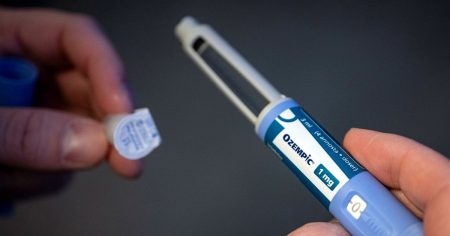Nitrous oxide, commonly known as laughing gas, is experiencing a surge in misuse, raising significant concerns about its impact on public health, particularly among young people. This colorless, sweet-smelling gas, legally used in medical and culinary settings, has become increasingly accessible and popular as a recreational drug, leading to a dramatic rise in reported cases of abuse and subsequent health complications. The ease of obtaining small, disposable canisters, often marketed for whipping cream dispensers, has inadvertently fueled this trend. The seemingly innocuous nature of the gas, coupled with its low cost and readily available supply, contributes to its widespread misuse, often underestimating its potential for harm. This escalating problem necessitates a comprehensive response, addressing both the supply and demand sides of the issue, combined with raising public awareness about the serious risks associated with nitrous oxide abuse.
The alarming escalation of nitrous oxide abuse is reflected in the sharp increase in calls to poison control centers. Over the past few years, these centers have witnessed a more than doubling of calls related to nitrous oxide exposure, a clear indication of the growing prevalence of this dangerous trend. The reported cases range from mild to severe, highlighting the unpredictable nature of the drug’s effects and the potential for serious long-term health consequences. The increasing number of calls underscores the urgent need for greater public awareness campaigns about the risks associated with recreational nitrous oxide use. Furthermore, it emphasizes the importance of implementing effective strategies to restrict access to these canisters, particularly for underage individuals, and to provide appropriate support services for those struggling with addiction.
The seemingly harmless nature of nitrous oxide, often perceived as a “laughing gas” for its short-lived euphoric effects, belies its potential for serious and debilitating health consequences. Prolonged or frequent inhalation of nitrous oxide can lead to a deficiency of vitamin B12, an essential nutrient for nerve function. This deficiency can manifest in a range of neurological symptoms, including numbness, tingling, and weakness in the extremities, mimicking the symptoms of a degenerative neurological disorder like dementia. Furthermore, chronic abuse can cause severe nerve damage, leading to permanent neurological disability and impacting overall quality of life. The potential for long-term consequences, including cognitive impairment and physical disability, underscores the critical importance of educating the public, particularly young people, about the serious health risks associated with nitrous oxide misuse.
The addictive potential of nitrous oxide, though often underestimated, poses a significant threat to vulnerable individuals, particularly young people. The initial euphoric effects of the gas can quickly lead to a pattern of compulsive use, with individuals seeking the temporary high despite the negative consequences. As tolerance develops, users may require increasing amounts of the gas to achieve the desired effect, further increasing the risk of serious health complications. The psychological dependence, coupled with the readily available supply, creates a dangerous cycle of addiction that can be difficult to break. This highlights the need for specialized addiction treatment programs tailored to address the specific challenges associated with nitrous oxide abuse, providing comprehensive support and resources for individuals seeking recovery.
The escalating problem of nitrous oxide abuse demands a multi-pronged approach, addressing both the supply and demand aspects of the issue. Restricting access to nitrous oxide canisters, particularly for minors, is crucial in curbing its misuse. Implementing stricter regulations on the sale and distribution of these canisters, combined with increased enforcement, can help limit their availability for recreational purposes. Simultaneously, raising public awareness about the serious health risks associated with nitrous oxide abuse is essential. Targeted educational campaigns aimed at young people can effectively dispel the misconception of its harmless nature and highlight the potential for long-term health consequences, empowering them to make informed decisions and avoid engaging in this dangerous behavior.
Addressing the demand side of the issue requires providing comprehensive support services for individuals struggling with nitrous oxide addiction. Specialized treatment programs tailored to address the specific challenges associated with this form of substance abuse can offer a lifeline to those seeking recovery. These programs should incorporate evidence-based therapies, including cognitive-behavioral therapy and motivational interviewing, to help individuals understand their addictive behaviors, develop coping mechanisms, and build a foundation for sustained recovery. Furthermore, fostering collaboration among healthcare professionals, educators, and community organizations can create a supportive network for individuals and families impacted by nitrous oxide abuse, providing access to a continuum of care and resources to promote long-term well-being. By addressing both the supply and demand sides of this multifaceted problem, we can work towards mitigating the growing public health crisis posed by the escalating misuse of nitrous oxide.














